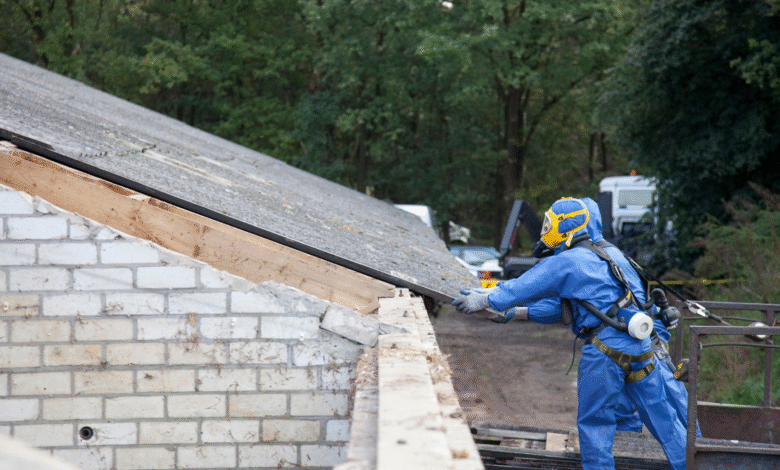The Unseen Threats of Asbestlint: How to Identify, Protect Against, and Understand

While asbestos is known for its heat-resistant and durable qualities, the severe health risks that accompany its exposure like lung cancer and mesothelioma make asbestos a health risk. More recently, a new health risk has emerged, that of Asbestlint. Asbestlint refers to the invisible, fine dust that asbestos can release during the absurdly heat and mechanical work.
What is Asbestlint?
Asbestlint refers to ultra-fine dust, classified as ultra-fine asbestos, that is imperceptible to the naked eye. Unlike its microwave cousin, larger asbestos fibers, asbestlint is weightless, can be invisibly airborne, and inhaled undetected. It occurs when Asbestos materials are cut, ground, or improperly altered referred to as Asbestos Containing Material, ACM.
Sources of Asbestlint
The dust asbestlint has the ability to surface during a number of standard activities in old buildings. Asbestos can be released into the air due to.
- Deteriorating insulation: like tapes, boilers, and pipe insulations, especially on the industrial side.
- During the Renovation Work: when people start to cut or sand ACMs: the act of burning, cutting, and sanding the ACM in a structural remodel sends gas into the atmosphere.
- Mechanical wear: Asbestlint dust may be as a result of older piping insulation.
- Improper removal of asbestos: The lack of safety procedures while removing asbestos can result in a dusting of asbestlint particles.
Asbestlint is a form of asbestos that can remain suspended in the air for hours, silently drifting without detection and depositing the lungs of any individuals in proximity.
Health Risks of Asbestlint
Health risks associated asbestlint are similar to that of bigger asbestos particles, and can cause irreversible harm to the body. The body undergoes a series of processes to remove asbestlint.
1. Asbestosis
A chronic condition of the lungs, asbestosis is the result of scar tissue formation. The body undergoes a series of processes to heal the damage caused by asbestosis. Such processes lead to symptoms of chronic cough, feeling exhausted, and persistent breathlessness.
2. Lung Cancer
Asbestos can put individuals at risk for lung cancer, especially for those who never smoked. Shockingly, individuals whose occupation is handling asbestos are at a greater risk of lung cancer than the average population.
3. Mesothelioma
Unlike more common forms of cancer, mesothelioma manifests as an aggressive, rare cancer that targets the lungs or abdomen. It is almost synonymous with asbestos exposure, taking decades to reveal its notorious self.
4. Pleural Thickening
The so-called “pleura” are simply membranes that enfold the lungs and thorax. Breathlessness and chest discomfort can follow as a result of the thickening of these membranes due to asbestos exposure.
Why Detection of Asbestlint Is Difficult
Asbestlint is so fine that it goes undetected in most air quality evaluations. Standard detection methods for asbestos fiber, including Phase Contrast Microscopy (PCM), do not have the necessary sensitivity for these very small particles. Transmission Electron Microscopy (TEM) is the only method that can detect asbestlint.
Employees in these high-risk locations need to use personal air exposure devices that monitor and record exposure in real-time. These devices provide air samples that can be tested for asbestos and asbestlint.
Prevention and Control Measures
Asbestlint can be difficult to detect, but it can be prevented and controlled with the right measures. Protecting yourself and mitigating risks within your workplace is made possible through the following steps.
1. Engineering Controls
- Ventilation Systems: With the use of High Efficiency Particulate Air (HEPA) filters, ventilations systems can be upgraded to help prevent asbestlint from contaminating the air.
- Sealing Work Areas: Ensure work zones are appropriately sealed off to contain the spread of particles during the renovation or demolition of asbestlint contaminated zones.
- Wet Methods: When dealing with Asbestos Containing Materials (ACMs), wetting surfaces helps prevent the generation of airborne dust.
2. Administrative Controls
- Safety Protocols: Comprehensive safety protocols addressing asbestlint risks and air monitoring are to be implemented. Air testing and worker training must be routinely conducted.
- Scheduling: High-risk work activities must be conducted during designated low site occupancy periods to reduce exposure.
- Access Control: Increased security measures to prevent the untrained from entering controlled high-risk zones are to be initiated. Only authorized and trained personnel should be allocated to work with the controlled materials.
3. Personal Protective Equipment (PPE)
With exposure to asbestlint, the right PPE to be worn is based on the level exposure:
- Low Exposure: N100 respirator and gloves.
- High Exposure: Full face respirator, coveralls, and boot covers.
Correct use and disposal of PPE after use is essential, particularly for asbestlint exposed workers.
Legal and Financial Consequences
Ignoring asbestos-related issues have risks that extend beyond health concerns. Exposure to asbestos in the workplace may result in seeking worker compensation and even legal compensation in a lawsuit. There are a range of legal and financial consequences that may fall upon a company that does the following:
- Claims from workplace compensation due to asbestos-related illnesses.
- Lawsuits of negligence due to employees or employees family who are diagnosed with asbestos-related diseases.
- Fines or citations from OSHA and EPA due to negligence of regulatory safety requirements.
- Incurred Costs of legal action and workplace safety violations brings on a business halt or need expensive clean-up.
Steel Manufacturing Plant Real-World Example
In Ohio, a steel manufacturing plant ran into a major problem as asbestlint was a serious concern for the company. For the plant, the insulation which was old would deteriorate over time, and had the potential risk of releasing particles into the air. The company would need to close for a number of months due to workers reporting respiratory symptoms. The business in question was forced to undergo major remediation efforts which included air filtration systems alongside comprehensive staff retraining.
As this is the conclusion, please note that the essay’s headings and subheadings must be compliant as it is undergoing the same format and do not need to be repeated.
Conclusion
Asbestlint is widely recognized as dangerous because it is invisible and, in a metaphorical sense, it attacks its victims slowly, secretly. While the threats posed by asbestos are well understood, asbestlint is an adaptation that remains a danger through much more stealth. If we understand it’s sources, its health risks, the available methods for detection, and prevention techniques, we could support safer workplaces and avert the health, legal, and financial devastation that exposure brings.
There is an opportunity for decisive action for managers responsible for industrial safety. Asbestlint exposure is entirely preventable, and its stealthy nature does not require major investment in safety detection systems or in well-defined safety procedures. But the costs of failing to protect workers can impact the business for a long time.
The overarching lesson is that asbestlint can indeed be both unavoidable and detrimental.





